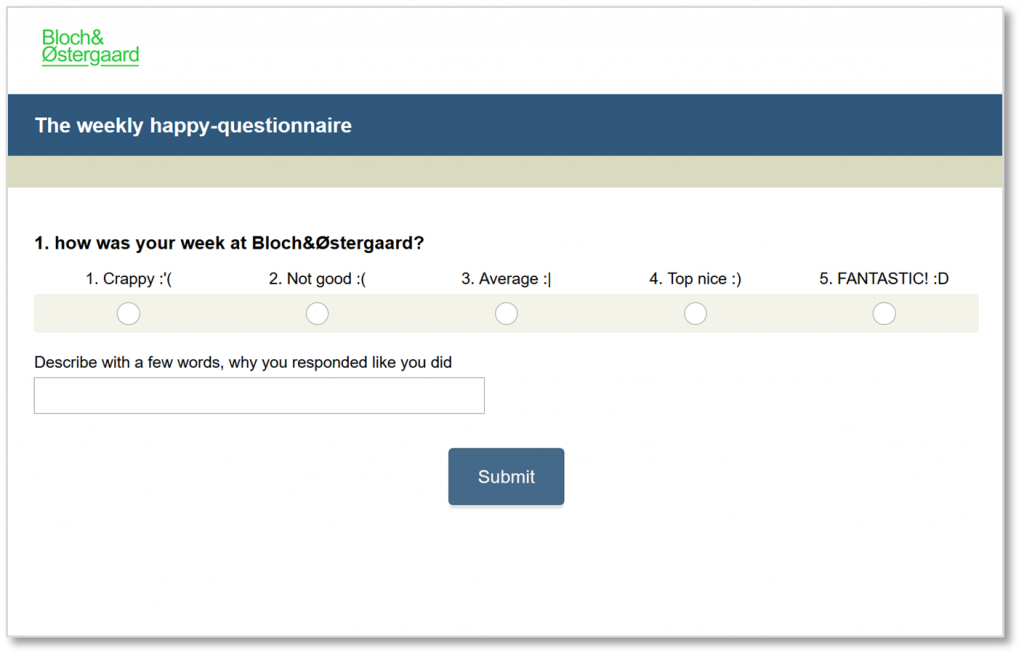An easy way to measure employee happiness
By Line Bloch, 7. January 2016
 It takes only a few minutes
It takes only a few minutes
Weekly ‘happiness measurements’ are actually quite easy to run, easy to manage and the reporting takes very little of both you and your employees time. But why do it?
First of all to ensure that the team discusses how people in the team are doing. It may sounds a bit redundant if you also have 1:1s, and feel you have a good relation to the team members, but this creates the ‘room’ for the team to get to know more about each other: Everybody in the team gets an idea on how things are going. Everybody get to say how they are doing, and everybody is heard.
It strengthens the relations, and ensures that each individual is acknowledged for their input.
It basically builds common understanding, strengthens team empathy, how the team work together, and in the end adds to building a strong team that cares about each other and their joint deliverables; resulting in better value for the customer.








